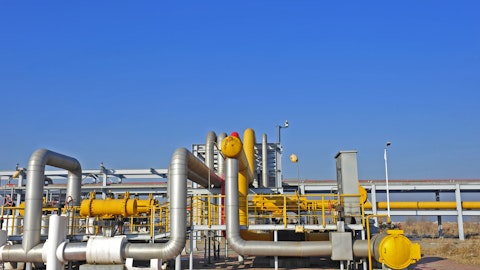In this article we take a look at the 30 most polluted cities in the United States. Click to skip ahead and jump to the 10 most polluted cities in the U.S.
When comparing cities or regions on their pollution levels, there are several things that need to be considered. First off, cities can be considered polluted from several different angles and aspects. While water bodies surrounding urban cities can get polluted due to discharges or waste disposal, the major factor that affects the daily life of citizens is air pollution. The denser the population of the cities, the higher the level of air pollution tends to rise due to the large amounts of emissions constantly being released into the air, making it unbreathable and detrimental to health and life expectancy.
The absolute pollution figures might point at the US being one of the top polluters in the world, with over 5,145.2 million tons of carbon emissions according to the 2019 BP Statistical Review of World Energy. However, if we look at the air quality of the cities it might seem cleaner than most cities in other parts of the world. This is so because when we compare the livability of cities, it is largely also dependent on the density of population and also the concentration levels of pollutants. While most cities in the US might be emitting greater amounts of air pollutants, owing to the heavy industrialized economy, the concentration levels might be lower compared to its counterparts owing to the large area that the country is spread across.
Air quality also, does not just include CO2 emissions, but largely consists of particulate matter, which is what majorly causes health implications like respiratory diseases, or weakened heart or lung functioning due to prolonged exposure. The United States Environmental Protection Agency (EPA) specified AQI (Air Quality Index) is the best yardstick to measure the level of pollution in the air of a certain region. The major pollutants that are considered in the AQI are Ground level ozone, Carbon monoxide, Sulfur dioxide, Nitrogen dioxide and airborne particles. The higher the AQI figures the greater is the air pollution while anything over 200 AQI is considered to be unhealthy air as stated by EPA.
Air pollution is largely attributable to particulate matter which includes a mix of dust, soot, smoke and liquid particles or aerosols. It is a major determinant of air quality and a major irritant present in the air. Fine particulate matter is what causes major health hazards to citizens , while reducing visibility when in high concentration in the air. According to WHO, prolonged exposure to PM2.5 can increase long-term risk of cardiopulmonary mortality by 6–13% per 10 µg/m3 of PM2.5 (8–10).
The Improving Knowledge and Communication for Decision-making on Air Pollution and Health (Aphekom) in Europe was conducted to understand the implications on average life expectancy if PM 2.5 in polluted cities could be brought down as per WHO recommendations. Among the 25 participating European countries, it was observed that they averaged at 10µg/m3 and residents could live 20 months longer on an average if PM 2.5 levels were perfect. Los Angeles has a PM 2.5 level of 11. Los Angeles residents could live an average of approximately 1 month longer, if their PM 2.5 is reduced to 10 and also could live nearly a year longer if the air quality were perfect.
Given this, a measure of Fine particulate matter (PM 2.5) present in the air is a good focus to determine the level of pollution in a certain region.
As EPA produces a comprehensive track record of different air pollutants that affect individual cities, we have based our rankings on this Air Quality Trends Data and have ranked cities according to the level of PM 2.5 level measured in Wtd AM (µg/m3) for each of these cities.
Other coarse particles or PM10 can also be a cause of irritations and health complications and are majorly released from activities on construction sites, or mining. We have therefore reported PM10 for each of the cities that appear on our rankings as well.

Kekyalyaynen / Shutterstock.com
Population can be a major contributor too, and cities with greater population can often be greater emitters. We can therefore see some of the cities in our rankings also featuring in the 50 Most Populated Cities in the US.
Air pollution has been a major cause of concern for most big cities with unexpected increases in fine dust situations and smog in the recent past. And, even though 2020 has seen a sudden drop in air pollution levels owing to the pandemic, it might be just a temporary respite and chances are that the levels might shoot right up as soon as economic activities get ready to bounce back in action.
Pollutants in the air can also be a major contributor to climate change. But also, in the recent California wildfires we have witnessed how climate change and environmental factors can in fact lead to sudden increase in air pollution levels as well. It can be easily inferred that air pollution and climate change are quite closely related.
With the talks increasing around Climate Change and the clocks ticking for major nations to get to net zero emissions , let’s take a look at the problem areas and pinpoint the focus on the cities that need attention for their less than favorable air quality conditions.
30. Denver-Aurora-Lakewood, CO
PM 2.5 – 10
PM 10 – 111
While Denver average yearly AQI is at 34 and meets “healthy” air standards, it fails to meet the thresholds for PM2.5. Particularly in winter months, the city experiences pollution swings that makes it one of the most polluted cities in the US.

Pixabay/Public Domain





